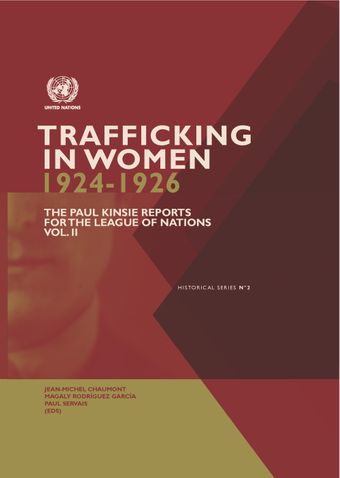Prostitution in Cairo

- Author: Francesca Biancani
- Main Title: Trafficking in Women (1924-1926) , pp 55-61
- Publication Date: July 2017
- DOI: https://doi.org/10.18356/df579b18-en
- Language: English
The expansion of the sex trade in colonial Cairo was an effect of the increasing integration of Egypt and its capital city within the global market and the colonial order after British occupation in 1882. Since the 1860s, and especially after the opening of the Suez Canal in 1869, which had greatly increased the role of the country in the world economy, Cairo’s urban fabric had started to change at an unprecedented rate. Large sections of the city were restructured or built anew to provide dwellings for the rising local middle class and the growing community of foreigners, attracted by Egypt’s economic boom and the very favourable fiscal and commercial concessions they enjoyed under the Capitulations, agreements signed between the Ottoman sultans and foreign residents in the Empire since the seventeenth century. Commercial activities multiplied, sanitization and diffusion of public transportation changed the ways in which residents, locals and foreigners alike, made use of the urban space. The fulcrum of such a changing urban landscape was the Azbakiyya, right in the centre of the modern city, which was quickly expanding to the north-east of the Islamic city on the western bank of the Nile.
-
From This Site
/content/books/9789210601566s001-c015dcterms_title,dcterms_subject,pub_keyword-contentType:Journal -contentType:Contributor -contentType:Concept -contentType:Institution105


